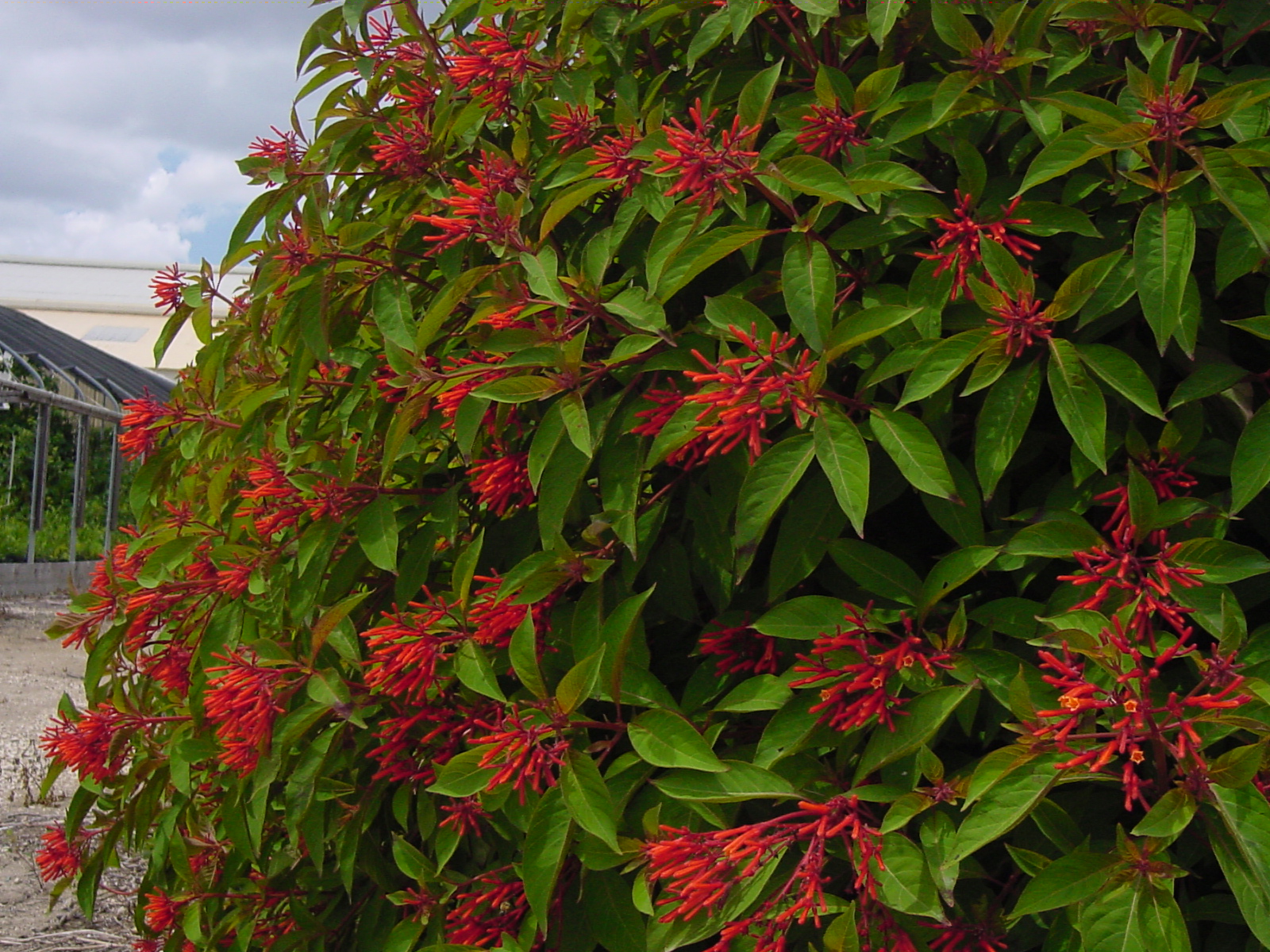
Firebush
Hamelia patens
Basic Information
🌿 Family: Rubiaceae🗺️ Zone: 9-11
Other Names:
- Scarlet Bush
- Hummingbird Bush
- Mexican Firecracker
- Redhead
🌡️ Ideal Temperature : 65°F – 85°F
🔥 Heat Tolerance: Up to 95°F
❄️ Cold Tolerance: Down to 25°F
🌱 Type: Perennial
Layers
- Shrub
Functions
- Pollinator
- Wildlife Attractor
- Medicinal
- Border Plant
Pests
No pests associated with this plant.
Description
Firebush (*Hamelia patens*) is a fast-growing, evergreen shrub native to Florida, the West Indies, and parts of Central and South America. It typically reaches heights of 6 to 12 feet (1.8 to 3.6 meters) and spreads 5 to 8 feet (1.5 to 2.4 meters) wide. The plant features whorled, ovate leaves that are 4 to 8 inches (10 to 20 centimeters) long, displaying a green color with red or purple speckles, especially in new growth. Its vibrant orange-red tubular flowers, measuring 1 to 1.5 inches (2.5 to 3.8 centimeters) in length, bloom profusely at the tips of branches throughout the year in warm climates. These flowers are highly attractive to hummingbirds and butterflies. Following the flowering period, small, glossy, dark red to black berries develop, which are favored by various bird species.
✂️🫘 Methods to Propagate:
- **Seeds:** Sow fresh seeds in well-draining soil. Germination typically occurs within a few weeks.
- **Cuttings:** Semi-hardwood cuttings taken in late spring or early summer can root successfully when placed in a humid environment.
- **Air Layering:** This method can be employed during the growing season to encourage root development on the plant before detaching the new specimen.
🌞💧 Sun and Water Requirements:
- **Sun:** Prefers full sun for optimal flowering but can tolerate partial shade, though with reduced blooms.
- **Water:** Once established, firebush is moderately drought-tolerant. Regular watering promotes lush growth, but the plant can withstand occasional dry periods.
🧑🌾👩🌾 When to Harvest:
- **Flowers and Leaves:** Can be harvested as needed throughout the year for medicinal uses.
- **Fruits:** Berries ripen to a dark red or black color and can be harvested when fully mature, typically in late summer to fall.
Purpose
- Pollinator: The tubular flowers provide nectar for hummingbirds and various butterfly species, enhancing pollination in the garden.
- Wildlife Attractor: The berries serve as a food source for birds, while the dense foliage offers shelter for small animals.
- Medicinal: Traditionally, extracts from the leaves and stems have been used to treat skin ailments and other inflammatory conditions.
- Border Plant: Its dense growth habit and vibrant flowers make it an excellent choice for creating colorful borders or hedges.